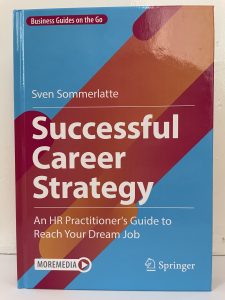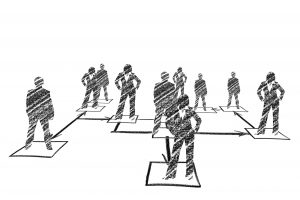Introduction
The story of Martin should help you to gain better understanding of the “size” of a role. Usually, candidates focus mainly on three aspects: the grade, the hierarchical positioning and the size of the team reporting into the role. That is also the information that is usually visible in the upper part of the job description.
The story of Martin
Martin works in the cosmetics industry. He has made a fast career in the marketing function of a company where marketing is king. When a disagreement came up with his line manager, he decided to accept the offer from one of their competitors. One of the main reasons why that new position looked attractive to him was the direct reporting to the region head. He saw this as a step up from his country level reporting in a previous role.

Soon he found out that this was quite a miss-judgement. Whereas marketing was king in the previous organization, country general managers had all the power in the new company. Although on paper his new position looked like a bigger role, his decision power was reduced.
Martin was used to a situation where no important brand related decision could be taken without consulting marketing. Now it was rather the contrary. Marketing could make proposals, but the final decision and the promotional budget was in the hands of the operational leaders. With other words, he was higher up in the hierarchy, but had less power. A tough lesson he learned about the real weight of a role.
What can we learn from Martin’s experience?
It is advisable to use the interview process to ensure you have a totally clear understanding of the real weight of the role. To do so, you should take a closer look at the following aspects:
Structure of the organization: Please check where the position you apply for is positioned exactly in the organization and what the implications are. As we say in Martin’s example, you should go beyond just checking who that position reports to.
Governance and delegation of authority: The job description should contain information about the responsibilities that this position has. But it is advisable to go beyond the words and make sure that you clarify what decisions that role is making with full autonomy versus those decisions it is participating in. You should also be clear on the budget ownership and on the thresholds in terms of financial engagements that are associated with this role.
Processes and role definitions: Who does what, when and how? This is a simple question, but it helps clarify how precisely the organization is operating. Do not hesitate to ask such very concrete questions in the interview process. This will show that you are competent and that you have a true interest for the job. Dig deeper if there is anything unclear or that is a concern for you.
The interview process is not just a selection tool for the recruiters, it is YOUR opportunity to ensure you have a clear understanding of the position and of all its implications. Recruiters will value if they see that you are keen to understand the responsibility and the key tasks precisely. As we have seen in Martin’s example, that may help avoid a painful misunderstanding concerning the true weight of the role in the organization.
More information in my book:
Sven Sommerlatte : Successful Career Strategy – An HR Practitioner’s Guide to Reach Your Dream Job (Springer, June 2023). ISBN: 978-3-662-66790-3





